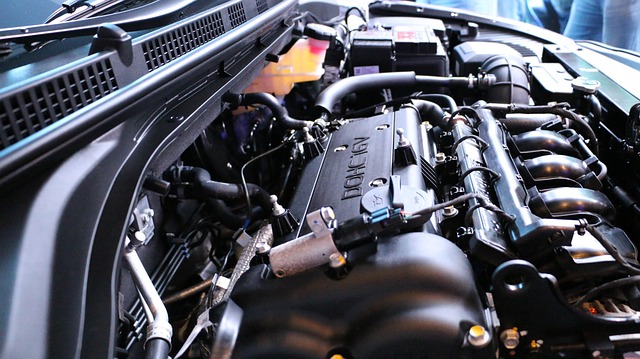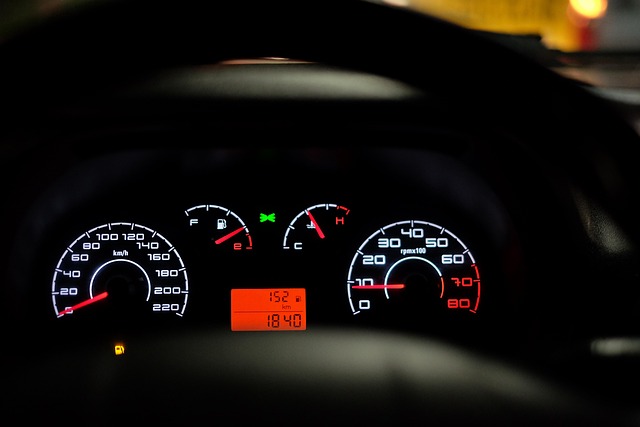Looking to register your car in California? This comprehensive guide walks you through every step, from understanding the requirements to finalizing the process. First, grasp the essential conditions for car registration in the Golden State. Next, gather crucial documents like title and insurance proof. Learn why performing a VIN (Vehicle Identification Number) verification is key before choosing a license plate. Finally, master the online registration process, ensuring a smooth experience with proper vin verification.
- Understand Requirements for Car Registration in California
- Gather Necessary Documents for Vehicle Registration
- Perform VIN Verification: Steps and Importance
- Choose an Appropriate License Plate and Register Online
- Finalize Registration: Payment and Receipt Retrieval
Understand Requirements for Car Registration in California

Before registering your car in California, it’s crucial to understand the specific requirements set by the state. This includes ensuring your vehicle meets safety and emissions standards, providing proof of insurance, and completing a series of necessary forms. One critical aspect is the verification of your Vehicle Identification Number (VIN). This unique 17-character code serves as a digital fingerprint for your car and is essential for accurate registration. In California, you can have a mobile VIN inspection or vin inspection done to confirm your vehicle’s authenticity and history, making the registration process smoother.
The state also requires documentation such as proof of ownership, which can be through a title or a bill of sale, and identification documents for both you and the previous owner if applicable. It’s important to have these documents ready before attempting to register, as they are necessary for verifying your information and ensuring compliance with California’s registration requirements.
Gather Necessary Documents for Vehicle Registration

Before you begin the registration process, make sure you have all the required documents ready. The most crucial piece is the Vehicle Identification Number (VIN) verification report. This can be obtained through a mobile vin verifier or by scheduling a vin inspection at a designated location. Additionally, you’ll need proof of ownership, typically in the form of a title or bill of sale, along with any outstanding loan documentation if applicable.
Don’t forget to bring valid identification, such as a driver’s license or state-issued ID card. These documents are essential for verifying your identity during the registration process. Ensure everything is up-to-date and accurate to streamline the procedures at the California Department of Motor Vehicles (DMV).
Perform VIN Verification: Steps and Importance

Before registering your car in California, performing a Vehicle Identification Number (VIN) verification is a crucial step. This process involves checking the vehicle’s history and ensuring it matches the information provided by the manufacturer. You can conduct a VIN inspection using a mobile vin verifier or online tools to verify details like the car’s ownership history, accident records, and outstanding recalls.
The importance of this step cannot be overstated. It helps protect you from buying a stolen vehicle or one with hidden damage. A mobile vin verification service allows you to complete this check conveniently while saving time. By ensuring the VIN data aligns with the expected information, you can confidently proceed with the registration process, knowing your new car has a clean and transparent history.
Choose an Appropriate License Plate and Register Online

Choosing the right license plate is a crucial step in registering your car in California. Select a design that reflects your style while adhering to state regulations. Plate designs vary, from standard sizes to personalized options, ensuring you find one that fits your vehicle and preferences.
Registering online streamlines the process, allowing you to complete it from the comfort of your home. The California Department of Motor Vehicles (DMV) offers an efficient system where you can enter your Vehicle Identification Number (VIN) for vin verification. This step is essential for accurate registration. Consider using a mobile vin verifier or conducting a mobile vin inspection to ensure your vehicle’s authenticity, making the registration process smoother and more secure.
Finalize Registration: Payment and Receipt Retrieval

After providing all the necessary information and documents, it’s time to finalize your car registration process in California. This involves making the required payment for registration fees, which can be done online or at a DMV office. The cost will depend on various factors, including the type of vehicle you own and any additional services you might require, such as emissions testing or a dual-use license plate.
Once your payment is processed, you’ll receive a registration receipt, also known as a Certificate of Registration. This document serves as proof that your car is legally registered in California. For added convenience, many individuals choose to have their mobile VIN verifier perform a vin inspection and verification process right after registration. This ensures the accuracy of your vehicle’s identification number (VIN) and can be particularly useful for those who prefer or require a mobile service.
Registering a car in California involves understanding key requirements, gathering essential documents, completing a vital VIN verification process, selecting appropriate license plates, and finalizing the registration online. By following these steps, you ensure your vehicle’s legal status in the state, enabling smooth operation on California roads. Remember, a successful registration process begins with accurate documentation and timely completion of the mandatory VIN verification.



